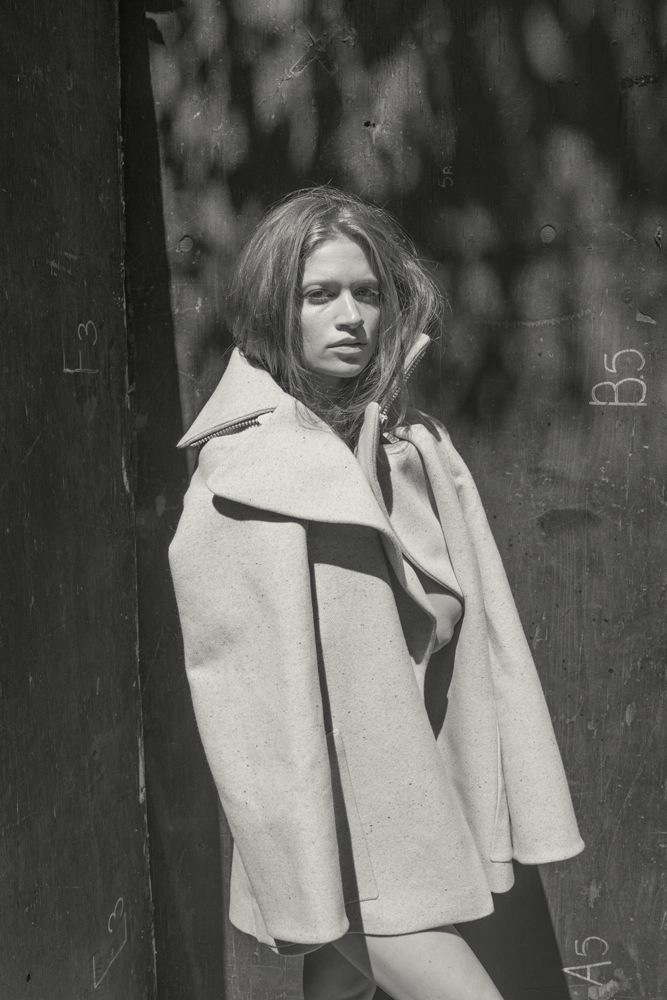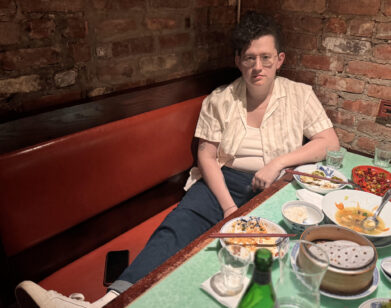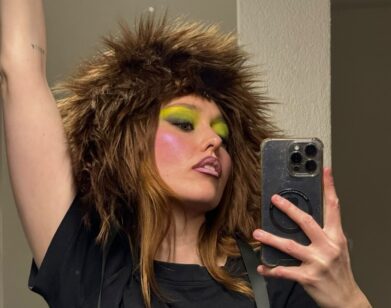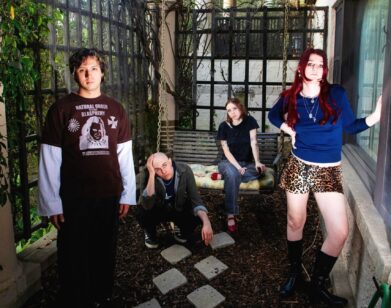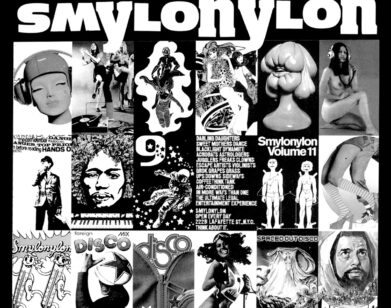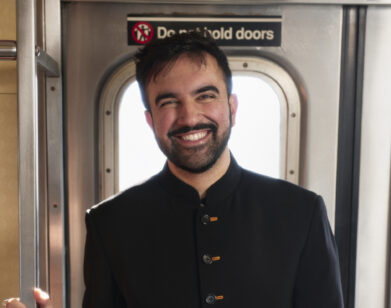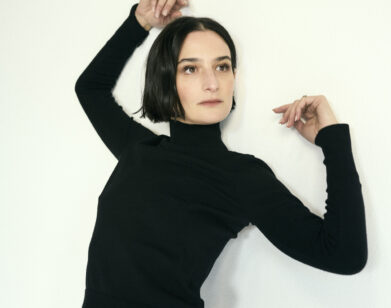Discovery: Sarah Hay
SARAH HAY IN BROOKLYN, NEW YORK, JULY 2015. PHOTOS: CHRISTIAN WITKIN. STYLING: MARINA MUNOZ/LALALAND ARTISTS. HAIR: LAURA DE LEON/JOE MANAGEMENT USING ORIBE HAIR CARE. MAKEUP: YACINE DIALLO/DEFACTO USING DIORSKIN NUDE. STYLING ASSISTANT: ANITA LAU.
Drug abuse, emotional abuse, prostitution rings, eating disorders, and incest: Flesh and Bone presents the dance world at its most dysfunctional. Created by Breaking Bad producer Moira Walley-Beckett, the new Starz series follows Claire (Sarah Hay), a young dancer from Pennsylvania, as she tries to restart her career at a ballet company in New York. While everyone at the company has their own issues—from the over-demanding company director (Ben Daniels) to the prima donna on a downslide (Irina Dvorovenko) to the manipulative heartthrob (Sascha Radetsky)—it is Claire, the timid ingénue, whose troubles are the darkest of them all.
In spite of many melodramatic plot twists, Flesh & Bone‘s aim is for authenticity. Walley-Beckett and her team decided to only cast professional dancers as the company members, regardless of their past acting experience. There was a global search for Claire before Hay, an American ballerina at Germany’s Semperoper Ballett, was cast.
“I think that Flesh and Bone represents the dance world very authentically,” says Hay. “There’s always this aspect of drama put on top of it, and it’s showcasing the problems of the dance world, but I’ve had experiences in reality that were written into the show. Certain people I’ve been introduced to, certain directors that I’ve worked with, have said things that you can never forget,” she continues.
Although classically trained at The School of American Ballet in New York, Hay is no bun-head: “I’m a ballet dancer,” the New Jersey-native tells us. “I’m not the most enthusiastic on pink tutus and roses.” Nor is Hay the stereotypical thin and fragile ballerina. In person she is at once slender and strong, beautiful and powerful. Her “unconventional” body-type is one of the reasons she chose her ballet company in Dresden. “After the audition, the director told me that I was sexy. In America, I would’ve been fat,” she recalls. “In the dance world you have to have a certain muscular shape; you have to have long limbs and willowy shoulders. It’s hard to have breasts. It’s becoming less of a little boy stereotype—you don’t have to look like an emaciated child anymore, you can be a little bit more of a woman. I’m hoping it stays in that direction.”
AGE: 27
HOMETOWN: Princeton, New Jersey
FIRST FILM: You’re Invited to Mary-Kate & Ashley’s Ballet Party, 1997. They came to my ballet school in Lincoln Center and auditioned a whole bunch of us. I was kind of a loser at the time—the chubby little redhead kid—and they chose me out of the whole group. Everyone was like “What? That loser kid is getting to be in this movie?” It was fun, but I hated the color pink, and they made me wear pink the whole time and I cried. I was nine.
LAST FILM: Black Swan, 2010. I just did some featured background dancing. I was a dancer in the company.
FAMILY HISTORY: We have a family of a lot of artistic people—my grandmother was an art dealer in New York, my grandfather was in the New York Philharmonic—but both my parents are psychologists. My sister wanted to be a dancer but ended up becoming a prosecutor in New Jersey. [Dancing] was always a dream, I think, for all the females in our family on my mother’s side—a lot of Russian blood.
BALLET BEGINNINGS: I think my mother always saw ability in me. When I got into The School of American Ballet, she realized that “Okay, maybe this is a possibility,” because at the time it was the most prestigious school in the country. They started to push me from there, about seven years old. I never even thought about doing anything else. There were some moments where I struggled with my body and my confidence, and people’s opinions, but for the most part I was always set on becoming a professional [dancer].
CHILDHOOD HERO: Susan Jaffe. She was in American Ballet Theater; she was one of my idols. I also loved Gelsey Kirkland, who was Baryshnikov’s muse—both of them were. The recently passed away Maya Plisetskaya, who was a Russian ballerina who danced into her 60s or 70s. She was just strength and power and woman and all those great things that come from ballet.
CURRENT COMPANY: I was dancing in Pennsylvania, I did a piece by William Forsythe, and the woman that set it really liked me. She told me to go check out some programs that do Forsythe and more improvisation. He’s more like a scientist than a choreographer, in my opinion. I just got really lucky; I was there at the right time [and] they really liked me in the audition.
THE DRAW OF DRESDEN: It’s a lot less competitive, for the most part. There’re so many different nationalities of people that I work with—Russians, Spaniards, Italians—it’s a huge spectrum, and I find that they’re more accepting of flaws, and there’s not so much of a stereotype of what you really need to be. You’re allowed to be a more unique individual.
CLASSICAL VS. CONTEMPORARY: I feel emotionally, I’m growing out of [classical ballet]. I love to play a character. If I’m playing Cinderella or Aurora in Sleeping Beauty or something like that, then I enjoy classical a lot. But to do just a two-minute solo, purely to show classical aesthetic, is not my favorite thing to do. I love music as well; I find that the more interesting the music, the more I can express myself through my movement. With classical, sometimes I feel a bit stagnant, a bit stiff and stuck, and I like to move and feel fluidity.
DREAM ROLE: I would like to do Juliet in a modern production. I’m not a big fan of Swan Lake; I love the music, but I would never want to dance the lead. It just seems so exhausting.
THE FLESH AND BONE SEARCH: I hadn’t heard anything about the show because I was in Germany. I got an email from someone. At first I thought it was reality TV, and I’m not really interested in doing something like that. Then I noticed the names at the bottom of the email, and who was producing: Lawrence Bender, John Melfi from Sex & The City, and Moira Walley-Beckett, who wrote Breaking Bad. I was like, “Oh, okay, this sounds a little more interesting.” So I put myself on tape and didn’t really expect to hear anything back. I went in for the final cut after they had seen all the other girls all over the world and I got it. That was kind of a surprise, but a beautiful one and a very exciting one. I missed the cattle call aspect, which is very, very lucky, because I’m a very nervous person and I probably would’ve been way stressed out to do a cattle call.
There’s always a chance that you’ll lose some of your credibility and a lot of respect from people. I was fortunate enough that my boss let me go. When I first told him about the audition, he said “No”—he just gave me the look, “No way.” When I told him I got it, he said, “Of course. You have to do it.”
CARING FOR CLAIRE: I think in every episode there was something that I was just like, “Are you kidding me? Really?” But there’s always a twist and a turn to it that makes it somehow work into the story. She really goes through it. She goes through a lot of pain and suffering and personal struggle to find the woman inside of her and what she’s supposed to be doing. I think Moira describes her as a “fish out of water who’s been thrown into the shark tank.” There were a lot of things that were very hard for me to do… but I met the challenge, I guess. I think Claire just wants to love herself. Everyone has that struggle to find comfort in just being themselves and not feeling judged by their own. She hasn’t had any comfort yet in her life; there hasn’t been a moment where she could just relax without something disturbing her. She’s very soulful and delicate, as well as strong and aggressive.
GETTING INTO CHARACTER: I think I did exactly the same kind of preparation [for Claire as for ballet characters]. You just research what the character is. Moira [and I] had many discussions about who is Claire, what is she supposed to be, what kind of abuse she went through, what family problems she has. Then I started to feel her pain. I took on her role in the same way that I would if I was dancing Aurora. You can express yourself through movement very similarly to with words. I try to immerse my full-being into every character. Even if I’m dancing and I’m in a pink tutu I still feel exactly the same way. If there’s something that’s more heavy or emotional, like if you’re dying on stage, Claire had a lot of feelings like that, where she just can’t anymore, and I’ve experienced that on stage.
I’m very sensitive, and sometimes I would go home and I would just be so emotionally exhausted from doing just simple scenes, but getting screamed at or having to run or cry. It just takes so much out of you. I’m not very similar to Claire in the sense that she’s a loner. I’m not really a loner—I like to be with people—so I tried to surround myself with friends and just be as happy as I could off set because there were a lot of depressing days that were very tough.
THE SUPPORTING CAST: I had met Irina Dvorovenko just in passing. I went to school at American Ballet Theater while she was dancing—she’s a Russian goddess. I had met, also, Sascha Radetsky, who’s also Charlie from Center Stage—the dreamboat. The whole show was cast except for me and I believe one other character when I got the role.
THE FUTURE: I would like to do some serious drama. I really connect with emotional characters who have struggles and a lot of emotion and colors. I don’t really want to do anything smiley and cheesy; it’s not really my personality when I’m working. I’d love to keep dancing because it’s been my rock my whole life. I wouldn’t want to give it up for no reason yet.
FLESH AND BONE PREMIERES THIS SUNDAY, NOVEMBER 8, ON STARZ.

